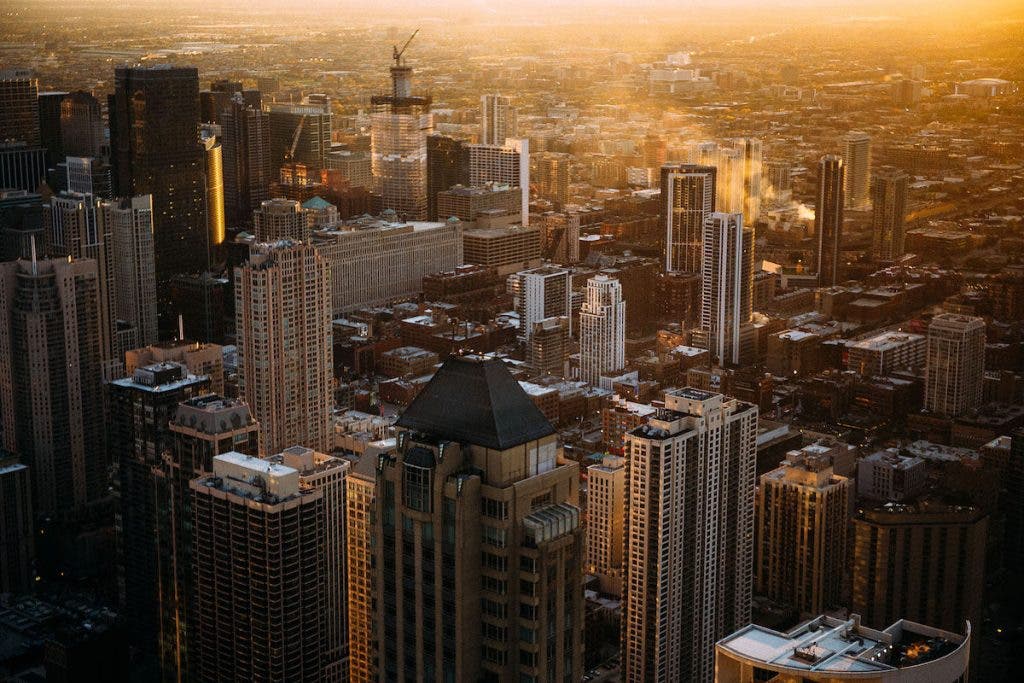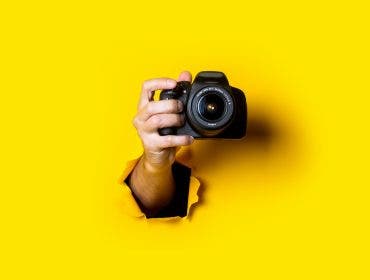The first thing most beginners get to photograph is the urban landscape around them. It’s easily accessible, generous in terms of subject matters, and fair in terms of gear. Furthermore, the urban landscape is full of stories waiting for someone to capture them. You can find endless ways to portray a city. For that reason and many others, many photographers fall in love with urban landscape photography and never grow apart from it. But what makes urban landscape photography such a beloved photographic genre, and how can you master it?
What is Urban Landscape Photography?
Urban landscape photography is a photographic genre that uses a town or city as its subject. From popular metropolis to vibrant cities to silent little towns, the urban landscape provides many insights into human civilization. It focuses on groups of people rather than on individuals and celebrates the achievements of mankind: architecture, art, social life, commerce, and so on.

One can describe urban landscape photography as the mix of manmade structures, activities, and people that compose urban life. Technically, it’s a mix of landscape photography (because it involves photographing vast spaces) and street photography (because it involves photographing city life). Above all, urban landscape photography is a genre that captures the soul of the city, its energy, and its moods.

Where Can You Capture Urban Landscape Photos?
The most common vantage points for urban landscape photography are historical city centers, popular squares or boulevards, and, of course, points that provide wide cityscape views. For example, you can visit the most famous square during its busiest time of the day (e.g., Tokyo’s Shibuya Crossing) or go on the roof of the tallest building (e.g., Montparnasse Tower Observation Deck in Paris).

However, you can find more intimate and less crowded places that offer a glimpse into the city’s history or lifestyle. You may consider taking photos near a flower market at dawn, walking along a river that crosses the city, or getting lost in an art or café district. Give yourself a moment to take in the atmosphere and feel its vibrations. Urban landscape photography is not just about photographing beautiful or interesting places, but also about telling stories.
Tips for Capturing Urban Landscape Photos
Because urban landscape photography is such a popular genre, it’s difficult not to take the same shots many other photographers have taken before you. Well-known vantage points attract photographers all year long and at any time of the day. So how can one take unique urban landscape photos? Here are some tips to get you started.
Use a Professional DSLR or Mirrorless Camera
Many argue that urban landscape photography accommodates any type of camera, from basic point-and-shoot cameras to professional ones. They are right. You can take amazing urban landscape shots with a phone camera.
However, a professional DSLR or mirrorless camera proves to be extremely helpful, especially if you prefer golden hour or night shots. They perform better in low-light conditions, feature advanced autofocus and image stabilization, and grant access to a broad range of lenses. Professional cameras have large sensors and powerful image-processing engines. They support RAW formats and capture accurate and detailed shots. High-quality urban landscape photos is the first step in leaving the competition behind.

Diversify Your Lens Choice
Another well-known fact about urban landscape photography is that you need a wide-angle lens to capture as much as possible and create beautiful cityscapes. However, you will soon find that other focal lengths are equally helpful.
For example, a 50mm lens creates a natural-looking perspective. It’s a better choice for capturing urban landscape photos at street level. At the same time, a telephoto lens allows you to capture details, bring subjects closer to the camera, and create a narrow depth of field when you need to blur a busy background.

Carry a Tripod
It may seem counterintuitive to carry a tripod, but you’ll find it useful. It stabilizes the camera and allows you to take long exposures. As a result, you‘ll be able to capture movement and add another dimension to your compositions. In addition, a tripod helps you document a particular landscape and use the same photo setup for a few hours. It even allows you to add yourself to the composition—like the famous photographer Vivian Maier used to do.

Consider Changing the Depth of Field
If you want to create a crisp sharp cityscape, you need a wide depth of field, but that’s not the case with all your urban landscape photos. Sometimes you may want to hide a busy background, create a bokeh effect, or simply make a subject stand out. Don’t limit yourself to using deep depth of field. Experiment as much as possible and see which camera settings better fit your personal style. It’s the only way to create unique and authentic photographs.

Experiment with Unusual Angles
Although it’s easier and more comfortable to shoot from your eye level, don’t do it all the time. Try getting to ground level or raising the camera above your head. Try photographing from your hip—like in Lomography. Urban landscapes provide plenty of lines and angles to play with.
For example, you can get to the subject’s level, place the camera above a subject, or photograph from below to make it look taller. Immerse into the atmosphere. Take in colors, highlights and shadows, contrast, and textures. There is never just one angle or camera position.

Follow the Rules of Composition but Don’t Stick to One
The rule of thirds is a big help when you photograph geometrical structures such as buildings and streets. It creates harmony and a natural perspective. But when all your urban landscape photos use the same rule, it becomes dull. Make a habit of going through other rules as well, such as the golden triangle rule and the golden ratio rule. Keep an eye open for symmetries, reflections, patterns, and any other visual element that can enhance your compositions.

Explore the Full Range of Subject Matters
Urban landscape photography provides the obvious subjects, such as buildings, bridges, streets, cars, and people. It also provides less obvious subjects, such as architectural details, trees and flowers, foods and drinks, shop windows, restaurants, and so on. You can find meaningful neon signs and billboards, animals and tiny insects, and exquisite murals and graffiti.
At the same time, you have conceptual subjects to take your photography to the next level. You may choose to focus on social issues and contrasts, or choose to document a particular activity or location.

Pay Attention to Geometry
Working with so many lines and shapes is not an easy job. You want horizontal lines to be horizontal and vertical ones to be vertical. A tilted perspective may be distracting and, if it’s not an artistic statement, you shouldn’t have it.
At the same time, pay attention to leading lines and ensure they lead the viewer in the right direction. Include as much negative space as needed to have a well-balanced composition. Geometrical features are visually heavy, and framing too many may create a crowded composition. Decompose the scene into basic visual elements before deciding on framing and pressing the shutter release button.

Focus on Storytelling
In most urban environments you’ll find landmarks, buildings and architectural details, cobbled streets, parks and gardens, bridges, and squares at rush hour. However, all these can be photographed by anyone. Why should your photos be special?
What differentiates your photos from those of other photographers is the story you tell. You need a narrative that goes beyond the visual aspects. Try to embed in your urban landscape photographs a little bit of history, psychology, and color theory, a temporal element, and a concept. Aim to take meaningful photos rather than just beautiful ones.

Find the Meaning of Wanderlust
If walking around the city without any purpose or direction is not your natural inclination, you may struggle to capture its essence. Even the best camera and most masterful technique won’t help you here. You can’t look at a place only through your lens and hope to take authentic pictures. They will be beautiful but empty. Seek out the power of wanderlust, adopt the mindset of an explorer, and the meditative experience of taking in the city atmosphere to open up your vision.

Conclusion
Urban landscape photography is a popular genre. Thus, you need a real passion and dedication to take unique photographs and create an authentic style. Invest as much time and energy in learning photography techniques and composition as you do in walking around and taking in the moods of a place. Know its history and lifestyle before pressing the shutter release. Look for an intimate encounter with the city.






